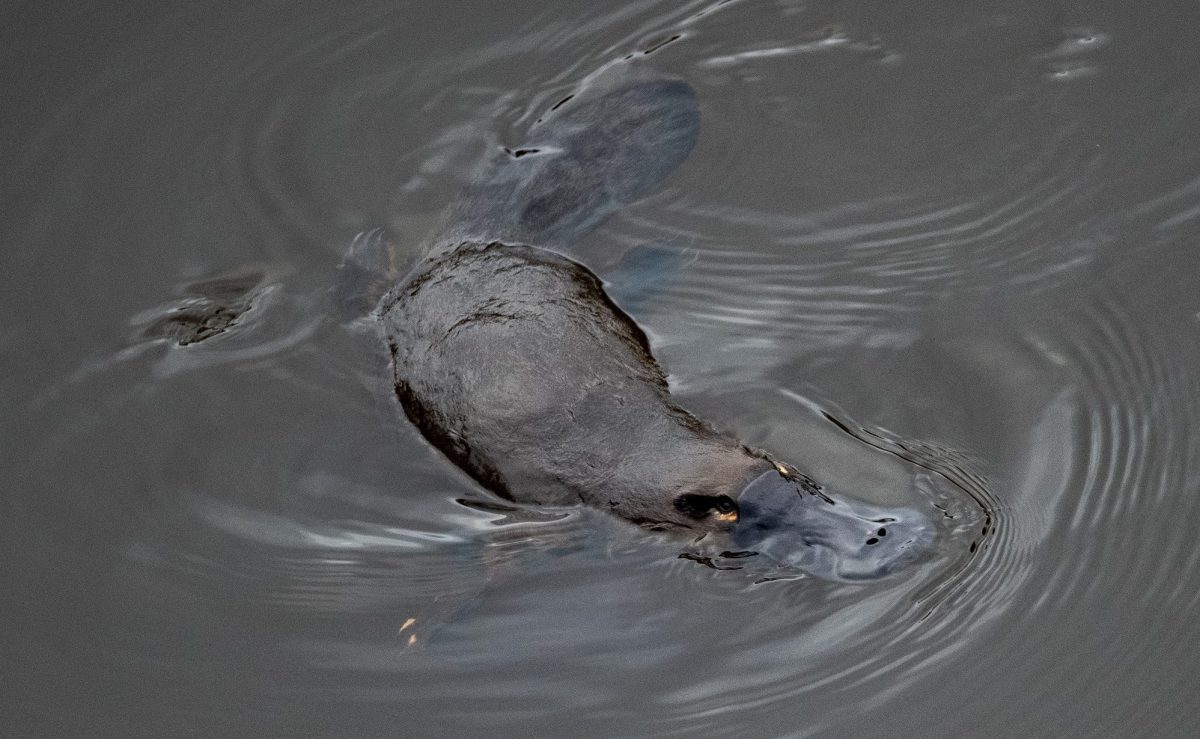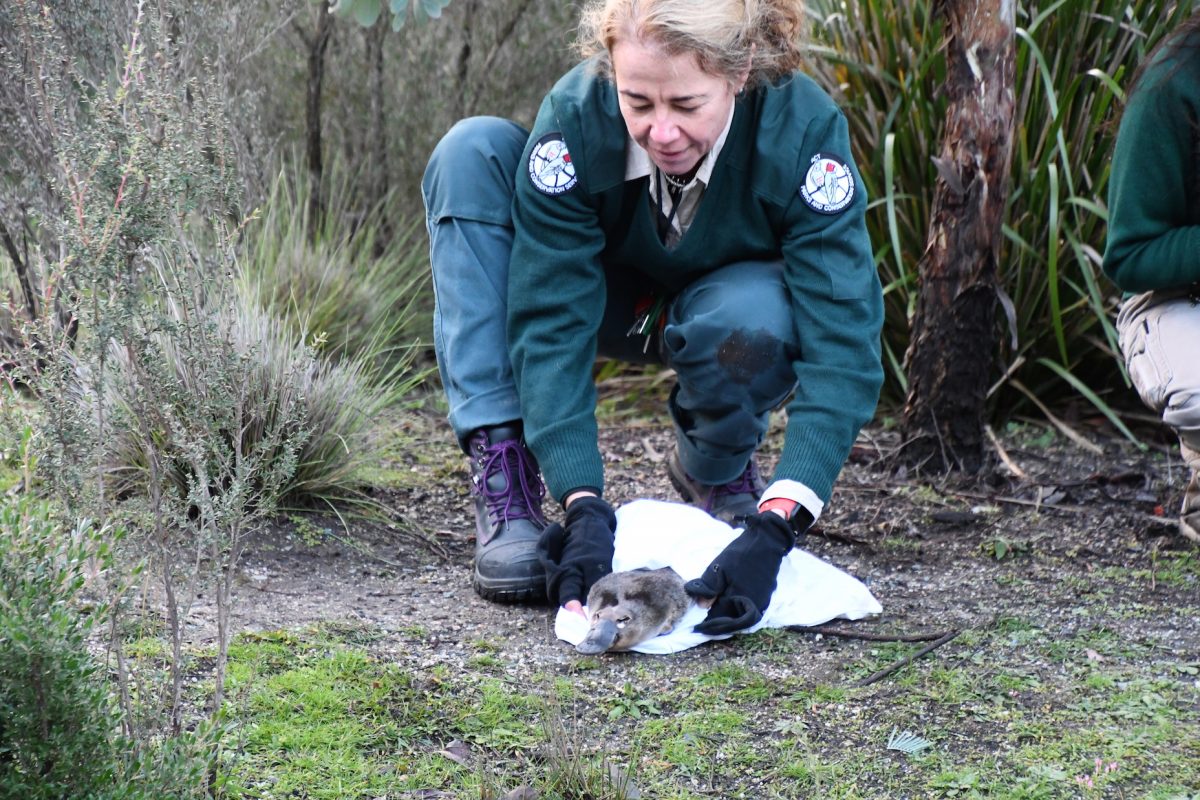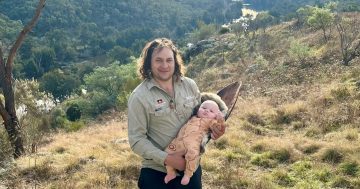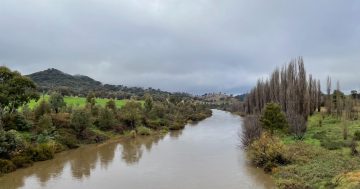
Platypus spotted at Queanbeyan River during Platypus Month last year. Photo: John Martin.
When the first pelt of a platypus arrived in England in 1798, it was immediately suspected someone had simply taken a duck’s beak and sewn it onto the body of a beaver. One zoologist George Shaw even took to it with a pair of scissors to check for stitches.
Europeans hadn’t seen anything like it before.
Many Canberrans probably haven’t seen one either. But August marks ‘Platypus Month’, and you’re encouraged to pick up a pair of binoculars (and a lot of patience) and help find out just how many there are in our waterways.
‘Platypus Month’ has been held in Canberra since 2014
The annual event is held by environment group Upper Murrumbidgee Waterwatch and teams volunteer citizen-scientists with researchers to “build an understanding of regional platypus populations and demonstrate what is happening with our local populations”.
“The presence of platypus in our rivers indicates the health of our river system and its water quality,” Waterwatch regional facilitator Daniel Harris-Pascal said.
“And late winter is an ideal time to spot platypus as they forage for food and seek out a mate.”
In its first year, four surveys were conducted across the ACT. There are now 34 surveys split across eight sites. These include Jerrabomberra Creek, Cooma Creek, Queanbeyan River, Point Hut Crossing, Coppins Crossing, Tidbinbilla, and the Murrumbidgee River near Cooma and in the Scottsdale Bush Heritage Reserve.
Almost 300 eager volunteers take an hour at either dawn or dusk to spot the weird native animals.
A total of 21 platypus individuals were detected during Platypus Month last year across all eight locations, up on 2019’s number but 10 down on 2020’s.

Rescue team member Dr Sarah May from ACT Parks and Conservation releases a platypus. Photos: ACT Parks and Conservation.
The subsequent report noted a “concerning observation” at Jerrabomberra Creek where no platypus were detected at all, compared to three in 2020.
“This is the first time this has happened since we started monitoring there during Platypus Month 2014,” the report read.
Platypus numbers in decline
The Australian Conservation Foundation (ACF) says populations are declining, especially in South Australia where they’re listed as endangered and Victoria where they’re vulnerable.
“Platypus numbers are in decline and this unique creature is now at risk of extinction,” the website reads.
“Over the past 30 years their habitat has shrunk by at least 22 per cent, or about 200,000 square kilometres which is an area almost three times the size of Tasmania. We believe the platypus should be listed as threatened nationally.”
You have to be ‘patient’ to spot a platypus
This isn’t to say you won’t still spot platypus in the ACT region.
Local photographer Ricardo Mendonca frequents the Queanbeyan River where they “normally swim up and down the main part”.
“I’ve spotted them around the main bridge near the [Queanbeyan] Leagues Club, and if you’re lucky enough, the middle of the suspension bridge further down is always a good place to keep an eye out for them,” he says.
They’re normally to be found burrowing and foraging through the native grasses, shrubs and trees lining the riverbanks in the ‘riparian zone’.
“They are shy and quick,” Ricardo says.
“The number one rule is to be patient and quiet. It could be 30 minutes to an hour, and you have to know what you’re looking for – sometimes people mistake them for rakalis.”
For more information on Platypus Month and to RSVP for a survey, visit the Upper Murrumbidgee Waterwatch website.
Original Article published by James Coleman on Riotact.






